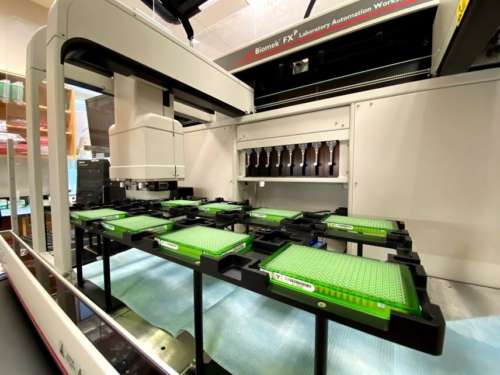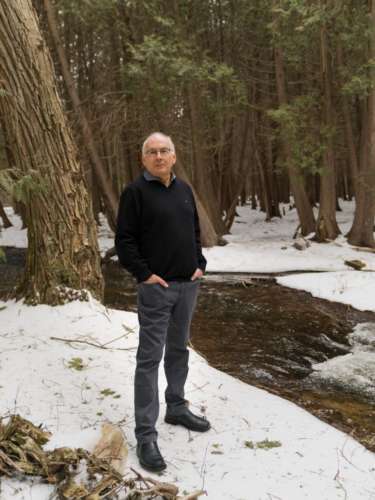
Researchers at the University of Guelph have developed a method to potentially deliver a rapid $1 COVID-19 test by screening a large number of samples at one time.
Prof. Paul Hebert, director of the Centre for Biodiversity Genomics (CBG) at U of G, and his colleagues are applying approaches created for DNA-based species surveillance to the detection of SARS-CoV-2, the virus that causes COVID-19.
This research project was recently featured in the Globe and Mail.
Being able to process thousands of samples daily is essential for monitoring the spread of the virus and making informed decisions on the enforcement and relaxation of lockdowns, said Hebert.
“Given there is no vaccine for COVID-19, there is an urgent need for rapid, inexpensive screening around the world,” said Hebert, who holds the Canada Research Chair in Molecular Biodiversity.
“For now, intense testing programs are the only way to suppress COVID-19. Our test makes this economically feasible because costs are minimized by employing bulk reagents and by automating key steps in the workflow through robotics, high-throughput sequencing and specialized informatics support.”

Current COVID-19 tests cost between $40-$100 and are still in limited supply.
Using either nasal swabs or saliva samples, the CBG’s method can screen thousands of samples within eight to 16 hours for $1 a sample.
“This approach is ideal for large-scale testing programs,” said Hebert. “Having the capability to run many thousands of tests weekly is crucial to our government’s efforts to move life closer to normalcy. For example, the safe reopening of schools and workplaces will require upwards of 100,000 tests a week. This volume of testing could be done in just one or two production facilities, such as the CBG, allowing for superior quality control compared to carrying out the same number of tests across many facilities.”
Hebert was the first scientist to propose that sequence diversity in short, standardized gene regions can identify species. The CBG is the world leader in technology stemming from this discovery, known as DNA barcoding, and its core facility now processes more than 1.5 million samples per year to support biodiversity research around the world.

The science behind the new COVID-19 test involves examining sequence variation in a single gene in SARS-CoV-2, said Hebert.
“We genetically tag 10,000 samples so they can be pooled for analysis in a single sequencing run. We then use these tags to connect sequences back to their source sample to ascertain the presence or absence of COVID-19. The latter task is facilitated by specialized informatics platforms that both absorb and analyze the data,” said Hebert.
Developing the new protocols required to apply DNA barcoding technology to COVID-19 testing was funded by the Canada Foundation for Innovation, the Canada Research Chairs program, the Ontario Ministry of Research and Innovation, and by donors Ann and Christopher Evans.
“With the global effort to screen tens of millions of samples for COVID-19 each week, it is certain that scalable, inexpensive protocols are essential, and our method meets this need,” said Hebert.
Contact:
Prof. Paul Hebert
phebert@uoguelph.ca